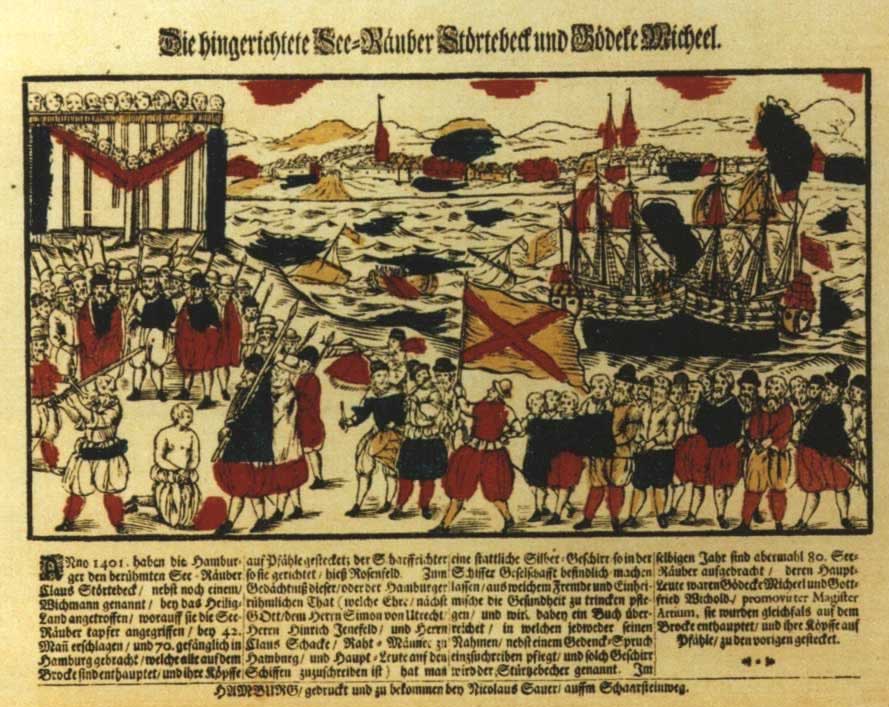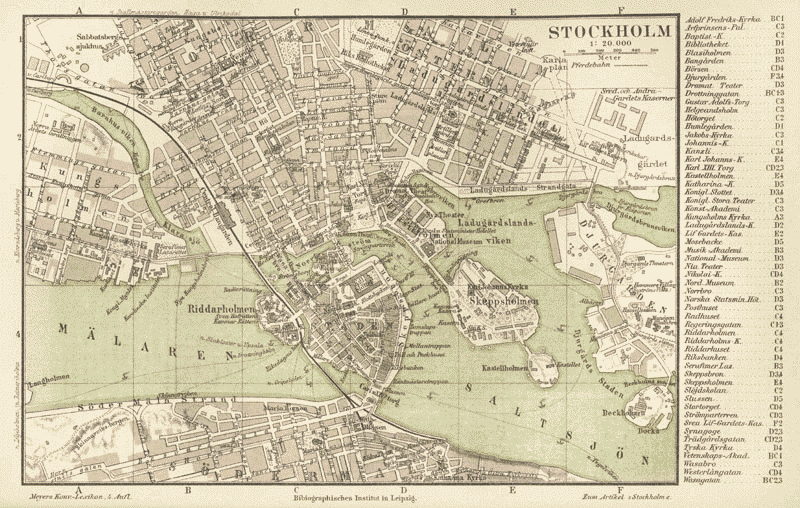|
Hättebröder
Hättebröder ("Cap's brothers"), was a group of a party of German-speaking burghers during the reign of the German Albert, King of Sweden, who came to be known for their oppression and persecution of native Swedish-speaking burghers in the Swedish city of Stockholm. During the reign of King Albert, who was from Germany, the city of Stockholm was dominated by the German burgher colony, particularly during his later reign. This German party persecuted and harassed Swedish burghers through members known as "Cap's brothers", ''Hättebröder'', because of their caps. On 11 June 1389, the ''Hättebröder'' finally imprisoned the Swedish mayor Bertil Brun, the official Peter Åländing and another Swede. This led to a Swedish burgher party arming themselves to free the prisoners. Under the threat of armed hostilities, the prisoners were released for a ransom. The following day, a Sunday, the Swedish city Councillors were summoned to the city hall by the German Councillors, who arrested ... [...More Info...] [...Related Items...] OR: [Wikipedia] [Google] [Baidu] |
Albert, King Of Sweden
Albert (, – 1 April 1412), also known as Albert of Mecklenburg (), was King of Sweden from 1364 to 1389 and Duke of Mecklenburg-Schwerin from 1384 to 1412. Background He was the second son of Duke Albert II of Mecklenburg and Euphemia Eriksdotter, the daughter of Duke Erik Magnusson and sister of King Magnus Eriksson of Sweden and Norway. In 1384, he inherited the ducal title of Mecklenburg and united it with Sweden in a personal union. Albert based his claim to the Swedish crown on his family ties: his mother, whose paternal grandfather was King Magnus Ladulås, positioned him as the first in line for the Swedish throne after the dethronement or deaths of all of Magnus Eriksson's children. Additionally, Albert traced his lineage through Princess Christina, a daughter of Sverker II, who was King of Sweden from 1196 to 1208. Reign In 1363, members of the Swedish Council of Aristocracy, led by Bo Jonsson Grip, arrived at the court of Mecklenburg. They had been bani ... [...More Info...] [...Related Items...] OR: [Wikipedia] [Google] [Baidu] |
Stockholm
Stockholm (; ) is the Capital city, capital and List of urban areas in Sweden by population, most populous city of Sweden, as well as the List of urban areas in the Nordic countries, largest urban area in the Nordic countries. Approximately 1 million people live in the Stockholm Municipality, municipality, with 1.6 million in the Stockholm urban area, urban area, and 2.5 million in the Metropolitan Stockholm, metropolitan area. The city stretches across fourteen islands where Mälaren, Lake Mälaren flows into the Baltic Sea. Outside the city to the east, and along the coast, is the island chain of the Stockholm archipelago. The area has been settled since the Stone Age, in the 6th millennium BC, and was founded as a city in 1252 by Swedish statesman Birger Jarl. The city serves as the county seat of Stockholm County. Stockholm is the cultural, media, political, and economic centre of Sweden. The Stockholm region alone accounts for over a third of the country's Gros ... [...More Info...] [...Related Items...] OR: [Wikipedia] [Google] [Baidu] |
Tre Kronor (castle)
Tre Kronor ( or ) or Three Crowns Castle was a castle located in Stockholm, Sweden, on the site where Stockholm Palace is today. It is believed to have been a citadel that Birger Jarl built into a royal castle in the middle of the 13th century. The name "Tre Kronor" is believed to have been given to the castle during the reign of King Magnus Eriksson in the middle of the 14th century. Most of Sweden's national library and royal archives were destroyed when the castle burned down in 1697, making the country's early history unusually difficult to document. History When King Gustav Vasa broke Sweden free from the Kalmar Union (a series of personal unions between Denmark, Sweden and Norway since 1397), Tre Kronor Castle became his most important royal seat. Gustav Vasa expanded the castle's defensive measures, while his son John III of Sweden later rebuilt and improved the castle aesthetically, turning it into a renaissance style castle and adding a castle church. The keep may ... [...More Info...] [...Related Items...] OR: [Wikipedia] [Google] [Baidu] |
Torture
Torture is the deliberate infliction of severe pain or suffering on a person for reasons including corporal punishment, punishment, forced confession, extracting a confession, interrogational torture, interrogation for information, or intimidating third parties. definitions of torture, Some definitions restrict torture to acts carried out by the state (polity), state, while others include non-state organizations. Most victims of torture are poor and marginalized people suspected of crimes, although torture against political prisoners, or during armed conflict, has received disproportionate attention. Judicial corporal punishment and capital punishment are sometimes seen as forms of torture, but this label is internationally controversial. A variety of methods of torture are used, often in combination; the most common form of physical torture is beatings. Beginning in the twentieth century, many torturers have preferred non-scarring or psychological torture, psychological meth ... [...More Info...] [...Related Items...] OR: [Wikipedia] [Google] [Baidu] |
Blasieholmen
Blasieholmen is a peninsula in central Stockholm, Sweden. It is located east of Kungsträdgården. Originally a small island, named Käpplingen, it became a peninsula, connected to Norrmalm, during the 17th century. Among the buildings at Blasieholmen are the Nationalmuseum Nationalmuseum is the List of national galleries, national gallery of fine arts of Sweden, located on the peninsula Blasieholmen in central Stockholm. The museum's operations stretch far beyond the borders of Blasieholmen, including the Natio ..., hotels and office buildings. The Skeppsholmsbron bridge connects Blasieholmen to the island of Skeppsholmen. The Blasieholmen Church was demolished in 1964. References External links * {{coord, 59.3297, N, 18.0769, E, source:wikidata, display=title Geography of Stockholm Peninsulas of Sweden ... [...More Info...] [...Related Items...] OR: [Wikipedia] [Google] [Baidu] |
Södermalm
Södermalm, often shortened to just Söder, is the southern district of Stockholm City Centre. Overview The Södermalm district covers the island of the same name (formerly called ''Åsön''), which, however, is not fully separated from the peninsula of Södertörn (or the rest of the Swedish mainland), as water to both its north and south does not flow freely but passes through a Karl Johansslussen, lock and a Hammarbyleden, man-made waterway. Södermalm is connected to its surrounding areas by a number of bridges. It connects to Gamla stan to the north by Slussenområdet, Slussen, a grid of road and rail and a lock separating the lake Mälaren from the Baltic Sea, to Långholmen to the northwest by one of the city's larger bridges, Västerbron, to the islet Reimersholme to the west, to Liljeholmen to the southwest by the bridge Liljeholmsbron, to Årsta by Årstabroarna, Årstabron and Skansbron, to Johanneshov by Johanneshovsbron and Skanstullsbron to the south, and, fin ... [...More Info...] [...Related Items...] OR: [Wikipedia] [Google] [Baidu] |
Victual Brothers
The Victual Brothers () were a loosely organized guild of privateers who later turned to piracy. They affected maritime history, maritime trade during the 14th century in both the North Sea, North and Baltic Sea, Baltic Seas. They were initially hired in 1392 by the Dukes of Duchy of Mecklenburg, Mecklenburg to support their fight against Margaret I of Denmark, Queen Margaret I of Denmark, who was besieging Stockholm. Named after the Latin word ('provisions'), their mission was to supply the city with goods. They initially had the support of most of the Hanseatic League, Hanseatic league apart from Lübeck. Over time, they became notorious pirates, attacking coastal towns around the Baltic region, so that the maritime trade in the Baltic Sea virtually collapsed. At the peak of their power in 1394, they took over the island of Gotland. Their influence in the Baltic region declined after the Teutonic Order drove them out of Gotland in 1398. After being expelled, the remaining Vict ... [...More Info...] [...Related Items...] OR: [Wikipedia] [Google] [Baidu] |
History Of Stockholm
The history of Stockholm, capital of Sweden, for many centuries coincided with the development of what is today known as Gamla stan, the Stockholm Old Town. Origins The name 'Stockholm' easily splits into two distinct parts – Stock-holm, "Log-islet", but as no serious explanation to the name has been produced, various myths and legends have attempted to fill in the gap. According to a 17th-century myth the population at the viking settlement Birka decided to found a new settlement, and to determine its location had a log bound with gold drifting in Mälaren, Lake Mälaren. It landed on present day Riddarholmen where today the Birger Jarls torn, Tower of Birger Jarl stands, a building, as a consequence, still often erroneously mentioned as the oldest building in Stockholm.''Stockholms gatunamn'', "Namnet Stockholm", pp 30–32. The most established explanation for the name are logs driven into the strait passing north of today's Gamla stan, old town which Dendrochronology ... [...More Info...] [...Related Items...] OR: [Wikipedia] [Google] [Baidu] |
14th Century In Sweden
14 (fourteen) is the natural number following 13 and preceding 15. Mathematics Fourteen is the seventh composite number. Properties 14 is the third distinct semiprime, being the third of the form 2 \times q (where q is a higher prime). More specifically, it is the first member of the second cluster of two discrete semiprimes (14, 15); the next such cluster is ( 21, 22), members whose sum is the fourteenth prime number, 43. 14 has an aliquot sum of 10, within an aliquot sequence of two composite numbers (14, 10, 8, 7, 1, 0) in the prime 7-aliquot tree. 14 is the third companion Pell number and the fourth Catalan number. It is the lowest even n for which the Euler totient \varphi(x) = n has no solution, making it the first even nontotient. According to the Shapiro inequality, 14 is the least number n such that there exist x_, x_, x_, where: :\sum_^ \frac < \frac, with and A |
Medieval History Of Sweden
In the history of Europe, the Middle Ages or medieval period lasted approximately from the 5th to the late 15th centuries, similarly to the post-classical period of global history. It began with the fall of the Western Roman Empire and transitioned into the Renaissance and the Age of Discovery. The Middle Ages is the middle period of the three traditional divisions of Western history: classical antiquity, the medieval period, and the modern period. The medieval period is itself subdivided into the Early, High, and Late Middle Ages. Population decline, counterurbanisation, the collapse of centralised authority, invasions, and mass migrations of tribes, which had begun in late antiquity, continued into the Early Middle Ages. The large-scale movements of the Migration Period, including various Germanic peoples, formed new kingdoms in what remained of the Western Roman Empire. In the 7th century, North Africa and the Middle East—once part of the Byzantine Empire—came und ... [...More Info...] [...Related Items...] OR: [Wikipedia] [Google] [Baidu] |





